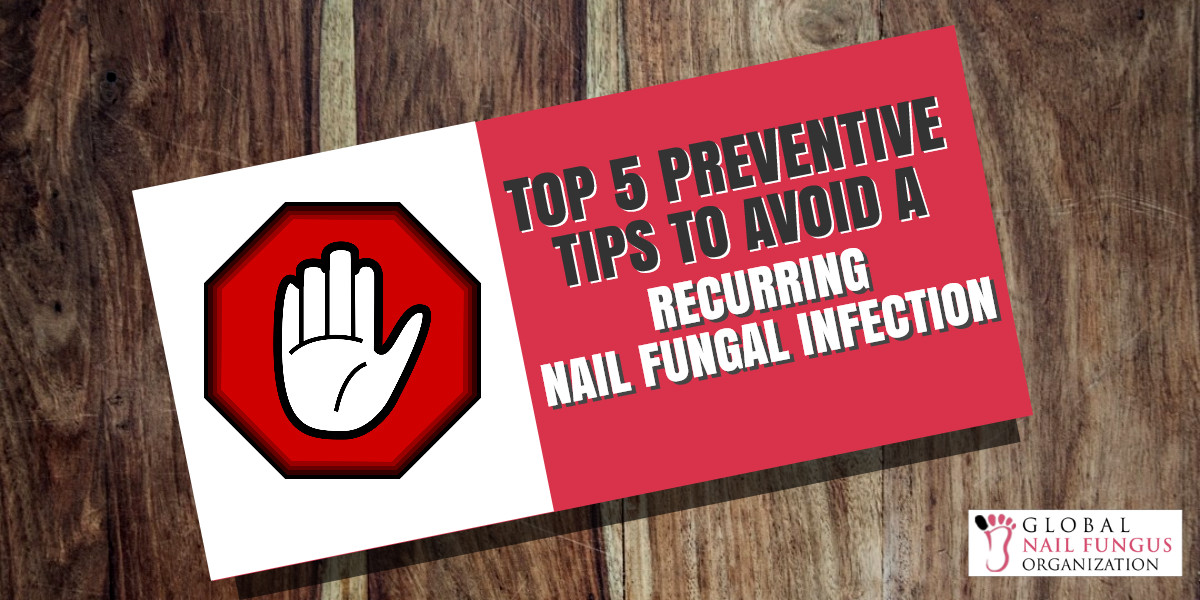 Top 5 Preventative Tips to Avoid a Recurring Nail Fungal Infection
Top 5 Preventative Tips to Avoid a Recurring Nail Fungal Infection
Table of Contents
Fungal Nail Infection Risk Factors and Prevalence
Nail fungal infection, or onychomycosis, is a common condition. It is also one of the most commonly occurring dermatological disorders, with its prevalence rate worldwide ranging from 3 to 26%. In North America alone, onychomycosis incidents are up by 14%, and fungal infection is 50% of all nail diseases.
Adults are also more likely to suffer from the condition. Prevalence of the condition increases even more in people over 60 years old. The aging population is more at risk of suffering from nail fungal infection than its younger counterparts because they generally have weakened circulation on their distal extremities and biomechanics.
Prevalence of onychomycosis is also high among people who have immunosuppression illnesses and diabetes.
Why Does Nail Fungus Infection Come Back
Even after successful treatment, there’s a high chance that the fungus that infects the nail will come back. That is why it is recommended to continue using a topical treatment for months after the nail fungus infection has been effectively eliminated. But why does nail fungus keep on coming back?
Some people are just prone to recurrent skin fungus infections. Fungus, especially on the feet and toenails, tends to recur in many adults because of genetic conditions. Their skin cannot recognize fungus as foreign. And when the fungus has stayed in the skin for a while, their immune system has learned to live with the fungus and therefore doesn’t try to get rid of it anymore.
Fungus may also return to the skin and nail through an environment with spores, or single-celled reproductive bodies that grow into a new organism. Fungal spores grow into new fungus, and they are usually present in moist places or even in footwear.
Top 5 Tips on Preventing Recurrence of Nail Fungus Infection
Practice Good Hygiene
It all starts with you. Fungus, bacteria, and other organisms that live on the skin would not have a chance to do so if you practice good hygiene. On a similar note, even after using effective treatments, you still wouldn’t be able to get rid of your nail fungal infection if your hygiene is questionable.
Wash your body, including the nails on your hands and feet, thoroughly and regularly with soap and water. Do not neglect the spaces in between the toes and fingers as well because the fungus could start living in those areas. Dry the whole body thoroughly before putting on clothes, gloves, and footwear.
Trim the nails to manageable length. However, avoid cutting them so close to the skin as this may cause laceration to the skin, which would even invite bacteria and fungi in.
Avoid sharing your towels, robes, and underwear with other people. These are items that can easily transmit germs, bacteria, and fungi from person to person.
Choose Proper and Clean Footwear/Use Safety Gloves
Moist feet enclosed in shoes are at high risk of acquiring fungi. Spores may live inside footwear that traps the moisture in. Choose shoes with breathable materials, and wear socks that wick moisture away. Change socks as often as needed, and avoid wearing old shoes if possible.
If using communal showers or public pools and spas, avoid walking barefoot. Wear flip-flops or other appropriate footwear. Do not share footwear with other people.
Use rubber gloves to protect your hands from overexposure to water or from harsh solutions. If handling old or dirty items, use protective gloves as well.
Be Aware of the Sanitation of Your Surroundings
Choose nail salons, beauty spas, gyms, and other lifestyle places that are clean. It’s easy to contract fungi in places like these because different people come there all the time. Different people also use their facilities and equipment, and some of those people may have body or nail fungi infection.
Make sure the establishments you visit properly sanitize their equipment regularly and after every use. If you want, you can bring your own nail salon tools to make sure the things that they are using on you are sterile.
Treat Athlete’s Foot and Other Body Fungus Immediately
Most nail fungi infections are caused by athlete’s foot. Some may also be caused by other body fungi. So if you have athlete’s foot, chances are the fungi that caused that condition may spread and multiply to your nails.
Treat athlete’s foot as soon as possible to prevent the fungi from spreading to the nails. For other body fungi, a neat trick is to use anti-dandruff shampoo on the infected part twice a month. Lather the shampoo on the skin, and leave it for about five minutes before washing it off completely.
Use Anti-fungal Cream and Powder
Anti-fungal creams not only treat nail fungus infection, but also prevent its recurrence. Apply these topical treatments on the nail and the surrounding skin regularly or as prescribed by the doctor.
Use effective topical solutions, like those with 10% undecylenic acid and a penetrating agent like tea tree oil. The undecylenic acid can kill the fungi, while essential oils like tea tree oil can penetrate the thick nails.
For added protection, you can also use anti-fungal powders or sprays on your feet and inside your footwear.
Conclusion
Treating nail fungus infection is a long and time-consuming process. Even with effective medications, the length of time in getting rid of the fungi could take weeks to months. Not only that, even after successful treatment, it’s likely that the fungi would return as well. While some people are prone to having recurring skin and nail fungus infection, others get it from their surroundings.
Fungi are also difficult to get rid off because fungal spores are present in many places. You can eliminate the fungal infection that you have in your nail, but to completely shun fungi out and never have it return is a little more difficult. Prevent fungi from ever coming back by being cautious about your surroundings, basically taking care of your body and practicing proper hygiene. Use topical anti-fungal ointments as treatment and preventative solution as well.






